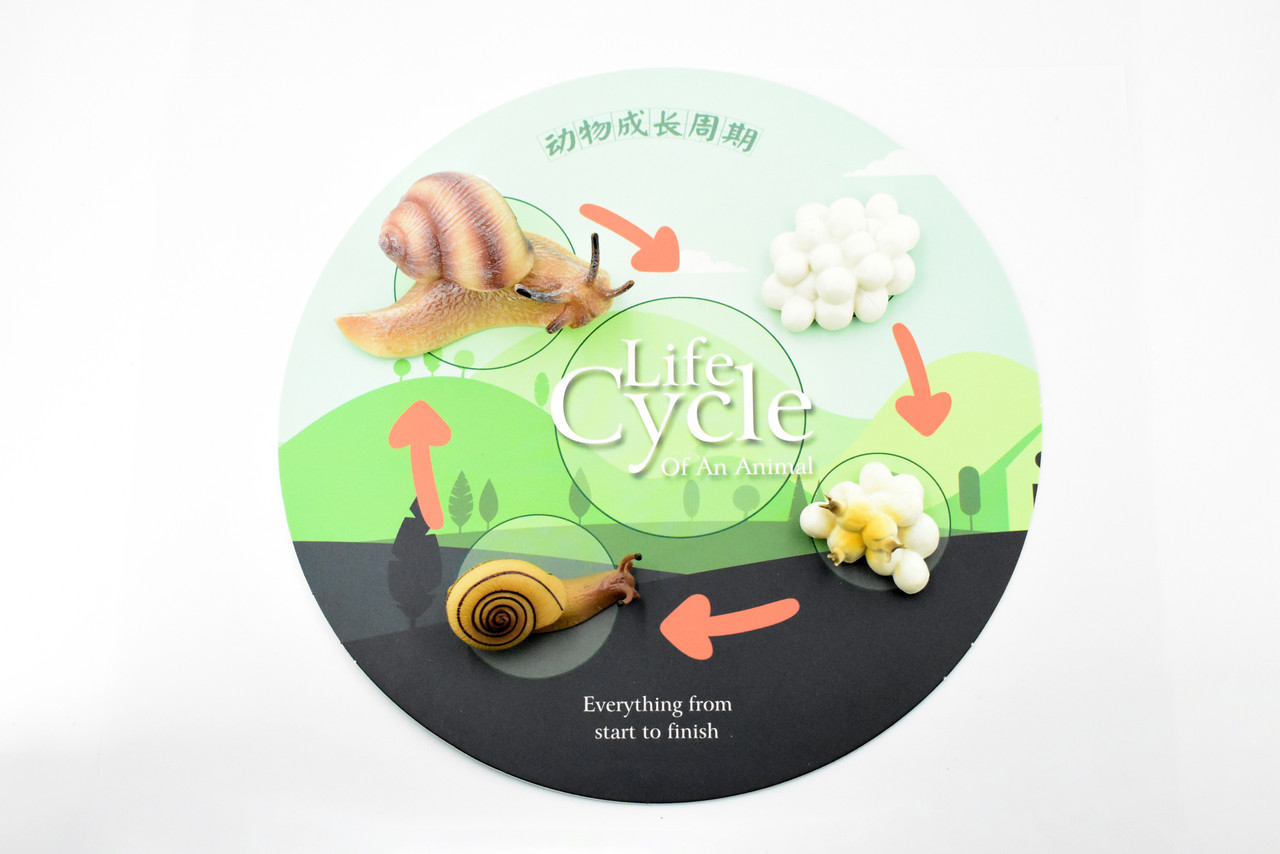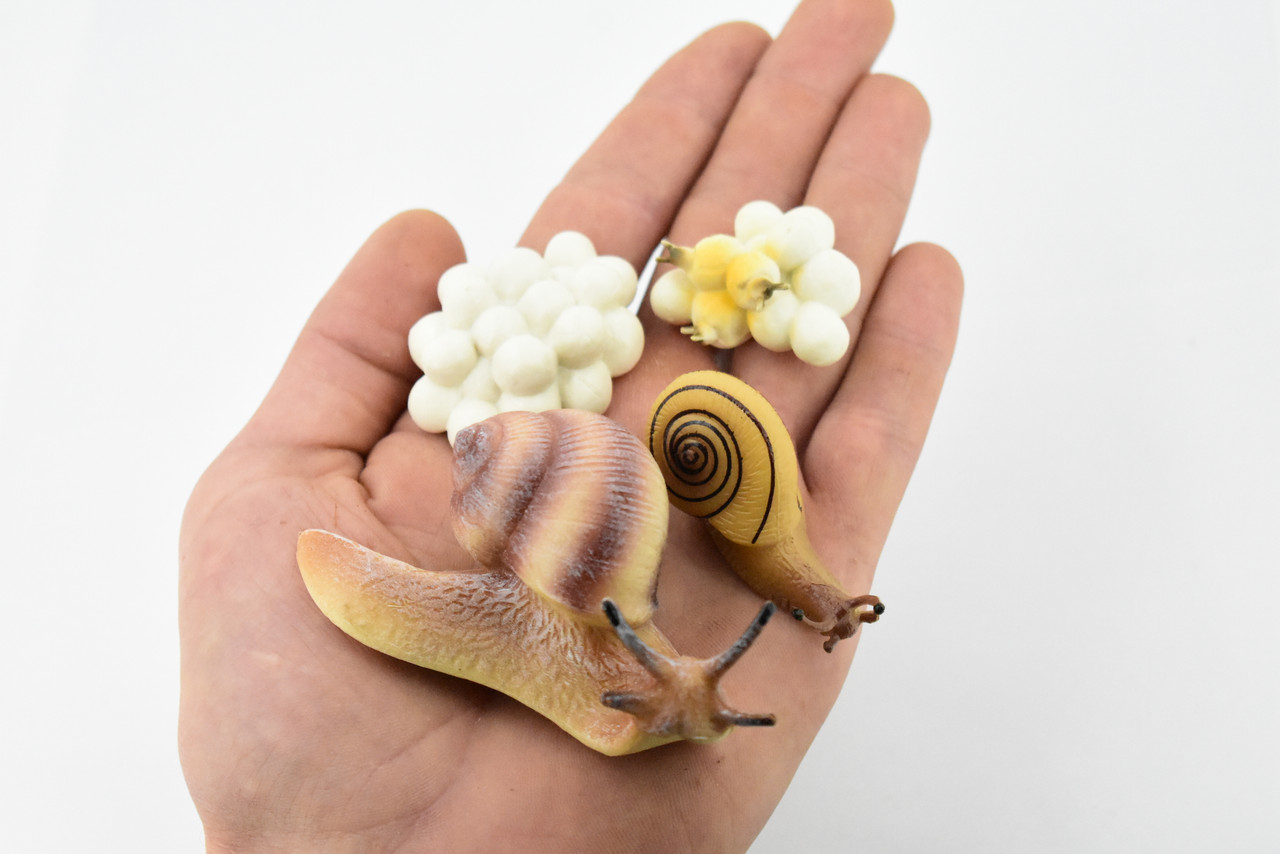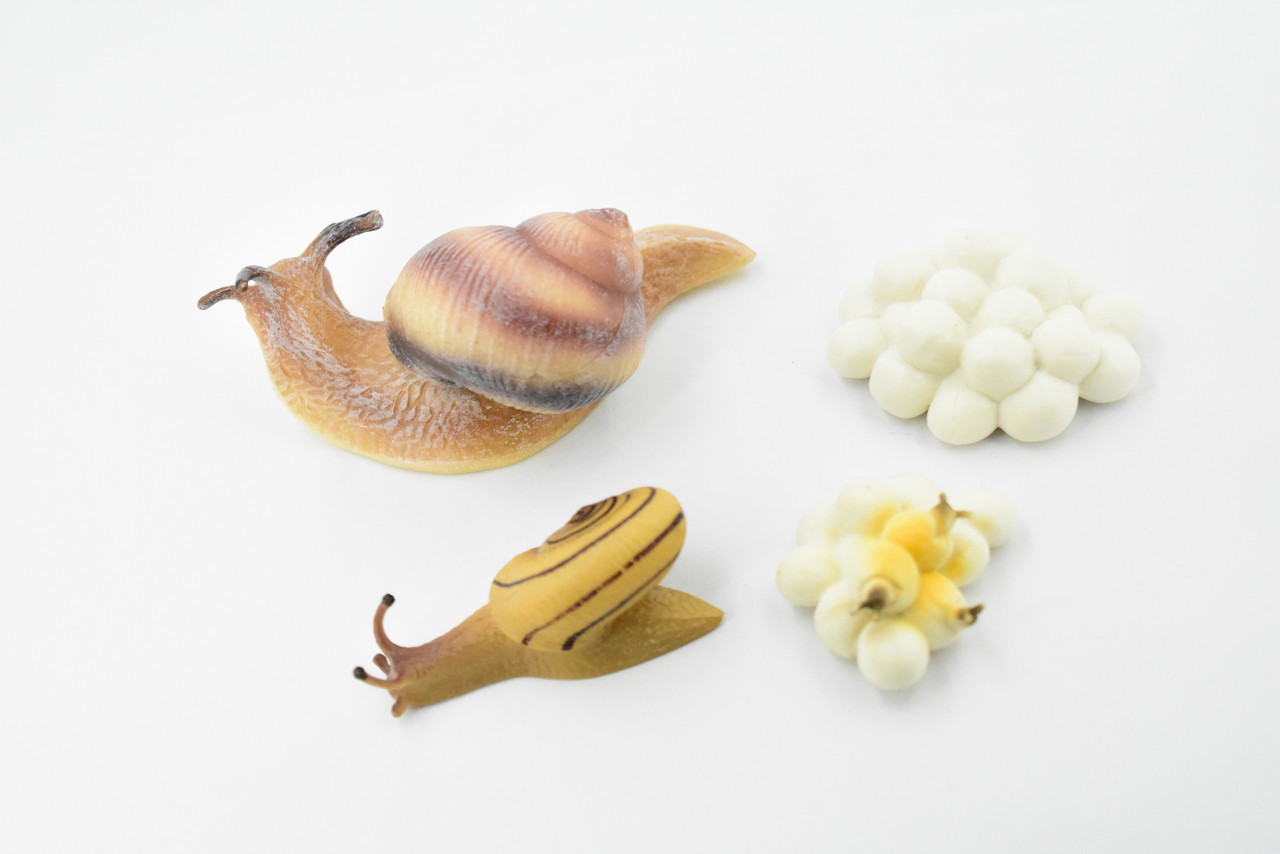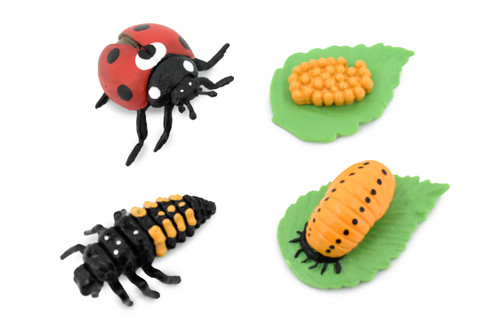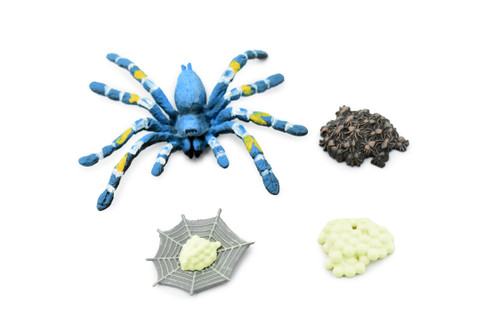Product Description
Snail, Life Cycle of a Land Snail, 4 Stages, Museum Quality, Hand Painted, Rubber Bug, Figure, Model, Realistic, Educational, 3 1/2"
Snails are interesting creatures that can be found all over the world. There are many different species of land snails and freshwater snails. They all go through the same stages during their life cycle. In order to explain each stage, we will divide the snail life cycle to four stages: Unfortunately, because they are fragile, slow and have low defensive mechanisms, most land snails will not complete their full cycle and die or get eaten.
Eggs, are small and round and they are usually white or translucent. They can be above the ground or below the ground, depending on the type of snail and the habitat. Some snail eggs are even sticky, so that they can attach to surfaces. Snail’s eggs take about two weeks to hatch, and during this time, the snail egg will develop a thin, protective layer called the operculum. The snail, even inside the egg, already has its shell. The eggs are usually in groups of 80-100. However, only a small percentage of those will have the opportunity to hatch. They are often eaten by predators, other snails or even humans (known as snail caviar).
Baby Snail, The next stage in the snail life cycle is the baby snail. The baby snail looks like a miniature version of the adult snail, and it is already starting to develop its shell. It is initially colorless or translucent, but it will start to develop its own color as it grows older. The baby snail will spend its first few days feeding on the egg sac that it was born from – as an excellent source of calcium. In addition to eating his own egg’s remains, it might also eat shells of other snail eggs around him or even unhatched eggs. After a few days, the baby snail will start to look for food on its own. The young snail will continue with his search for food – preferably types of food that are high in calcium – and attempting to avoid predators. As the young snail grows, its shell is also growing larger and larger and in addition, becoming stronger.
Adult, surviving its first few weeks and growing to about half the size of an adult snail, the young snail will start to develop its reproductive organs. At this stage, the young snail is becoming and adult snail and also starting to look for a mate. The adult snail life revolves around finding food, finding a mating partner, laying eggs and generally trying to survive. Once the snail finds a mate, they will start the process of reproduction. The female snail will lay her eggs in a safe place, and then both snails will protect the eggs until they hatch.
Most snail species live between 2 and 7 years in nature. However, in a safe environment, snail’s lifespan can go much longer to somewhere between 10-15 years. In some rare cases, they were observed to live even up to 25 years. You can tell the age of a snail by looking at its shell. As a snail grows older, it adds whorls (rings) to its shell in order to accommodate its growing body.
Collectible Wildlife Gifts is the market leader in providing high quality, realistic toys of all types! Every one of our items is heavily inspected for quality craftsmanship and authenticity. Our products make great gifts for your family and friends! Additionally, our lifelike animal figurines and plush make for great displays and educational sets. We are happy to serve our wide range of clientele from parents to educators, gift shop owners and many more!
Our team works hard to ensure you get a great toy. All products from CWG are checked for quality to ensure you receive the order in perfect condition.
From plush sharks to educational animal growths cycle we offer the perfect toy or gift for any occasion. Our products have been ordered by educational groups, aquariums, zoos, and more.
Great customer service is guaranteed when you order from Collectible Wildlife Gifts, we want you to love your toy and have a simple ordering process, we are happy to assist with inquiries!


